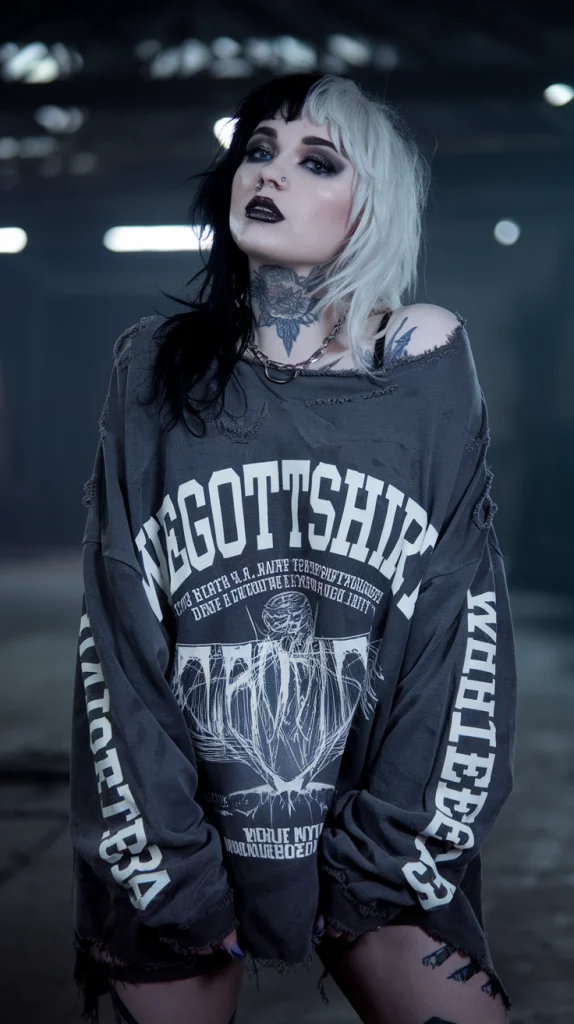Introduction
T-shirts, often considered the simplest piece of clothing, have transcended their humble beginnings to become a global fashion staple. Whether worn for casual outings, athletic activities, or as a statement of personal expression, T-shirts are an essential item in almost everyone’s wardrobe. This article delves into the history, cultural significance, types, materials, production process, environmental impact, and future trends of T-shirts, providing an in-depth exploration of this versatile garment.
A Brief History of T-Shirts
Early Beginnings
The T-shirt’s origins can be traced back to the late 19th century when it served as an undergarment for the working class. Derived from the union suit, a one-piece undergarment, the T-shirt emerged as a more practical option when separated into two pieces. It was during the early 20th century that the U.S. Navy began issuing short-sleeve crewneck undershirts made of lightweight cotton, setting the stage for the modern T-shirt.
The transition from utility to style began when laborers in hot climates adopted the T-shirt as standalone clothing. The simplicity and comfort of the T-shirt made it popular among workers, athletes, and eventually the general public.
Cultural Evolution
The 1950s marked a turning point in the T-shirt’s history. Thanks to Hollywood icons like Marlon Brando in A Streetcar Named Desire and James Dean in Rebel Without a Cause, the T-shirt transformed from an undergarment into a symbol of rebellion and youthful spirit. Over the decades, it evolved into a canvas for self-expression, featuring slogans, logos, and graphics that conveyed everything from political ideologies to pop culture references.
By the 1960s and 1970s, T-shirts were embraced by counterculture movements, becoming a medium for protest slogans and artistic expression. The rise of screen printing technology further amplified their cultural significance, allowing mass production of designs that appealed to diverse audiences. The T-shirt’s journey from practicality to cultural artifact is a testament to its adaptability and universal appeal.
Types of T-Shirts
T-shirts come in an array of styles, catering to diverse preferences and occasions:
- Crew Neck: The classic design with a rounded neckline, suitable for all body types.
- V-Neck: A more modern option that adds an element of style to casual wear.
- Polo T-Shirts: Featuring collars and buttons, these strike a balance between casual and formal.
- Graphic T-Shirts: Adorned with images, text, or designs, these are ideal for personal expression.
- Oversized T-Shirts: Popular in streetwear, these offer comfort and a laid-back aesthetic.
- Tank Tops: Sleeveless options perfect for warm weather or athletic activities.
- Henley T-Shirts: Similar to crew necks but with a buttoned placket for added style.
- Long-Sleeve T-Shirts: Ideal for cooler weather, offering more coverage and layering options.
- Raglan T-Shirts: Distinguished by their contrasting sleeve colors, often associated with sportswear.
- Crop Tops: A modern, trendy style often paired with high-waisted bottoms.
Materials and Fabric Choices
The material of a T-shirt significantly impacts its comfort, durability, and suitability for different purposes:
- Cotton: The most common material, known for its softness and breathability. Variants include combed cotton for added smoothness and ring-spun cotton for a softer texture.
- Polyester: Lightweight and moisture-wicking, ideal for sportswear. It is durable and resistant to wrinkles and shrinking.
- Blends: Cotton-polyester blends combine the best of both worlds, offering durability, comfort, and resistance to shrinking and fading.
- Linen: A premium choice for summer wear, known for its lightweight and airy texture. However, it tends to wrinkle easily.
- Organic Cotton: Gaining popularity for its eco-friendly production methods, organic cotton reduces the environmental impact of traditional cotton farming.
- Recycled Fabrics: A sustainable option made from repurposed materials, including plastic bottles and textile waste.
- Bamboo Fabric: Known for its natural antibacterial properties and breathability, bamboo is an emerging choice for sustainable fashion.
The Production Process
The journey of a T-shirt from concept to consumer involves several stages:
- Design: The process begins with sketches and digital prototypes that determine the style, fit, and graphic elements.
- Fabric Selection: Choosing the appropriate material based on the T-shirt’s purpose, such as comfort, durability, or sustainability.
- Cutting and Sewing: Precise cutting of fabric pieces is followed by stitching them together to form the garment.
- Printing and Embellishments: Adding graphics, text, or logos using techniques like screen printing, heat transfer, or embroidery. Advanced methods like DTG (Direct-to-Garment) printing enable intricate designs with vibrant colors.
- Quality Control: Each T-shirt undergoes rigorous inspection to ensure it meets the desired standards for fit, durability, and appearance.
- Packaging and Distribution: Once approved, the T-shirts are packaged and shipped to retailers or consumers.
Cultural Significance
T-shirts are more than just clothing; they are powerful tools for communication. From political campaigns to fandom culture, they allow individuals to convey messages and align with causes. Band T-shirts, for example, serve as badges of musical allegiance, while branded T-shirts act as walking advertisements.
In sports, team jerseys embody camaraderie and pride, while in activism, T-shirts with slogans amplify social and political messages. Whether celebrating an event or making a bold statement, T-shirts hold unique cultural significance that resonates globally.
Environmental Impact
The fashion industry, including T-shirt production, has a significant environmental footprint. Key issues include:
- Water Usage: Cotton cultivation requires vast amounts of water, leading to stress on freshwater resources.
- Chemical Pollution: Dyes and finishes often result in water contamination, affecting ecosystems and human health.
- Textile Waste: Fast fashion contributes to landfills overflowing with discarded clothing, many of which are non-biodegradable.
- Carbon Emissions: The production and transportation of T-shirts generate greenhouse gases, contributing to climate change.
Efforts to mitigate these impacts include promoting sustainable materials, adopting circular production models, and raising consumer awareness about mindful consumption. Recycling programs, eco-friendly dyes, and ethical labor practices are becoming more common as the industry moves toward sustainability.
Future Trends
The T-shirt industry is constantly evolving, with trends such as:
- Customizable T-Shirts: Advances in printing technology enable personalized designs, allowing consumers to create unique garments.
- Smart Fabrics: Integrating technology for features like temperature regulation, biometric tracking, and UV protection.
- Sustainable Practices: A growing focus on eco-friendly materials, ethical labor practices, and reducing waste.
- Virtual Fashion: Digital T-shirts for avatars in virtual worlds and gaming platforms, reflecting the rise of the metaverse.
- Gender-Neutral Designs: Emphasizing inclusivity, many brands are creating T-shirts that cater to all genders.
- Functional Fashion: Combining style with practicality, such as T-shirts with hidden pockets or built-in accessories.
Conclusion
The T-shirt’s journey from a simple undergarment to a global fashion phenomenon underscores its adaptability and universal appeal. It has become a medium for creativity, communication, and cultural expression. As the world embraces innovation and sustainability, the T-shirt is poised to remain a versatile and meaningful part of our wardrobes for generations to come. Its story is far from over, promising new chapters shaped by creativity, technology, and a commitment to a more sustainable future.


